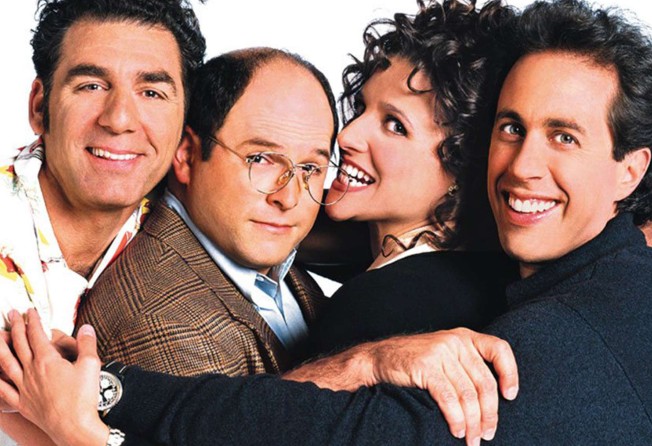
Book review: Seinfeldia tells readers little new about beloved TV show
Jennifer Keishin Armstrong’s book doesn’t live up to its subtitle – How A Show About Nothing Changed Everything; she is overreliant on other published comments and easily available sources


by Jennifer Keishin Armstrong
Simon & Schuster
2.5 stars
Eighteen years ago, in one of the most anticipated moments in American television history, fans of Seinfeld obsessed over the series ending its nine-season run and struggled with saying goodbye to one of the most influential, hilarious and successful comedies of all time.
In a sense, though, the farewell wasn’t entirely necessary. The show has lived on, with reruns regularly broadcast all over the world. And, in fits and spurts, we’ve been satiated with both extensions of the show and glimpses into the making of it.
Jerry Seinfeld resumed his stand-up life, regularly giving audiences a chance to ask questions about the show, and started Comedians in Cars Getting Coffee, which has included appearances by Seinfeld co-creator Larry David and co-stars Michael Richards and Julia Louis-Dreyfus.
David gave birth to a series, Curb Your Enthusiasm, made of pure Seinfeld DNA, and even built a season around a reunion of the earlier show. Interviews, panel discussions and outtakes have been abundant, and easy to view via YouTube. And perhaps most insightful of all, the series went to DVD with all sorts of insight and commentary etched into its discs.

Even though the show has never really gone away, we still crave more. The proliferation of so much material likely complicates an author’s ability to add something new to the conversation, though, and despite her noble efforts in Seinfeldia, Jennifer Keishin Armstrong does little to broaden perspective on the show for its most ardent fans.
Though Armstrong spoke to numerous writers and others involved in Seinfeld, the new light they shed is limited. The book did not include fresh conversations with the main characters or David, relying instead on other published comments and the aforementioned litany of easily available sources.
Without key players, we’re brought discussions on the periphery: with the real-life Kramer, the theme song’s composer, the woman whose face adorned a movie poster for the in-show movie Rochelle, Rochelle. Not that there’s anything wrong with that. But it leaves you wondering why we couldn’t come away with juicier morsels from more of the many hundreds involved in the show.
Couldn’t the author even track down more members of the fascinating parade of ancillary characters who might offer some new stories? Not Jerry Stiller, who played George Costanza’s father? Not Wayne Knight, of Newman fame? Not the actors behind David Puddy or J. Peterman or Susan Ross?
It’s not that interesting threads are completely missing from Seinfeldia. We learn of a scrapped episode in which Elaine weighed buying a handgun, of Richards’ aloofness on the set and of a York Peppermint Pattie standing in as the famed airborne Junior Mint to make sure the camera could easily track it.
Those glimpses are few. Deep into the book, in a chapter examining whether a Seinfeld curse doomed the cast from replicating their success, you’ll find a telling quote from Jason Alexander. The presence of a curse has easily been dispelled by the successes of Veep, Curb and Comedians in Cars, but Alexander’s words could easily apply to Armstrong’s attempt. “The problem with Seinfeld,” he says, “is that measuring up is no easy standard.”